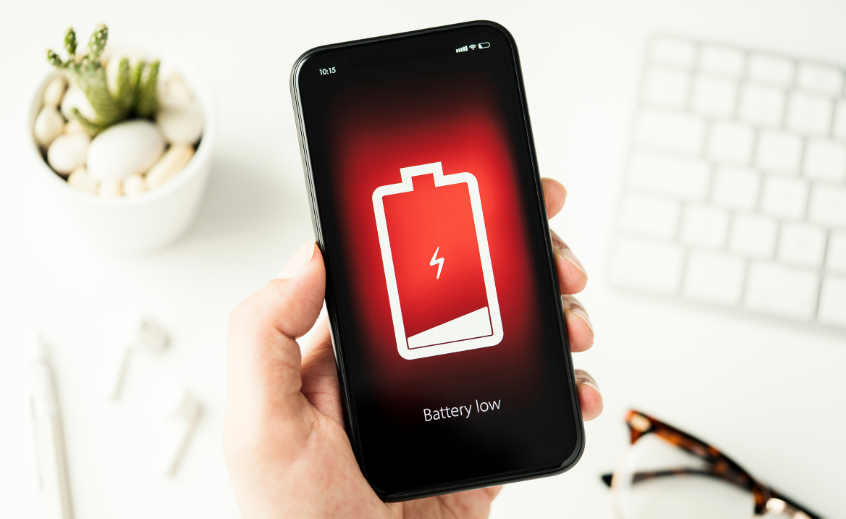Smartphones have long been indispensable in everyday life and within companies. For companies, it is crucial to have a precise understanding of the service life of cell phones in order to ensure the operational readiness of the hardware and to integrate it efficiently into the company’s processes. This article looks at the various aspects of the service life of cell phones in order to provide decision-makers with a sound overview.

How long does a smartphone last? The battery is often a limiting factor when it comes to the lifespan of smartphones. A defective battery can be replaced if necessary.
Life of a smartphone
How long does a cell phone last? A smartphone can usually be used for three to four years without restrictions. However, the actual usage time depends less on the hardware than on the software. The hardware of a smartphone, apart from the battery, usually lasts for decades. However, the battery can be replaced, and its lifespan can be extended by keeping the charge level between 20 and 80%. This is increasingly ensured by the operating systems.
Protective measures for the hardware
To prolong the life of the phone, appropriate protective measures should be taken. Cases and screen protectors can help keep a smartphone in good condition for years. The display is the most sensitive part of the smartphone and also the most expensive in case of replacement. Therefore, appropriate insurance should be considered.
Software is decisive factor for the life of the smartphone
To ensure that smartphones last as long as possible, companies must ensure that the smartphones they use are always supplied with the latest security updates and operating system versions.
The typical time of OS support varies between iPhones and Android smartphones. While iPhones are usually supported for a longer period, the support for Android devices can vary, depending on the manufacturer and model. An overview of how long devices are supported is provided by the Android Enterprise Recommended list. The necessary updates can be controlled centrally via a mobile device management system such as Cortado MDM.
Application Support
In addition to security updates and operating system versions, it is important that the smartphone supports current applications. As a rule, support for new smartphone hardware features is added over time, so companies are on the safe side. However, technology leaps, such as the introduction of NFC, can mean that it makes sense to replace smartphones early on to enable innovation.
Smartphone rental and resource recovery
Since smartphones can usually still be used for private purposes at the end of their life cycle for companies, or are also made of valuable resources, they should be reused accordingly. Companies should therefore consider whether it is worthwhile to only rent smartphones as a matter of principle, since they can simply be returned at the end of the rental period.
Conclusion
The service life of a smartphone depends to a large extent on the software and averages three to four years. Decision-makers in companies should protect the hardware and always provide it with the latest software updates to ensure maximum operational readiness. In addition, companies should consider appropriate insurance for the most sensitive and expensive components, such as the display.
It is important to keep an eye on support for current applications and the integration of new technologies to enable innovation in the company. The option of renting smartphones can be an attractive alternative for companies to ensure continuous device updates and use resources efficiently.
Overall, corporate decision-makers should pay close attention to the lifespan of smartphones to ensure optimal integration into corporate processes and maximize the value of the devices throughout their lifecycle. By paying attention to the aforementioned aspects, companies can ensure that their smartphones are always ready for use, and they can optimize hardware and maintenance costs at the same time.